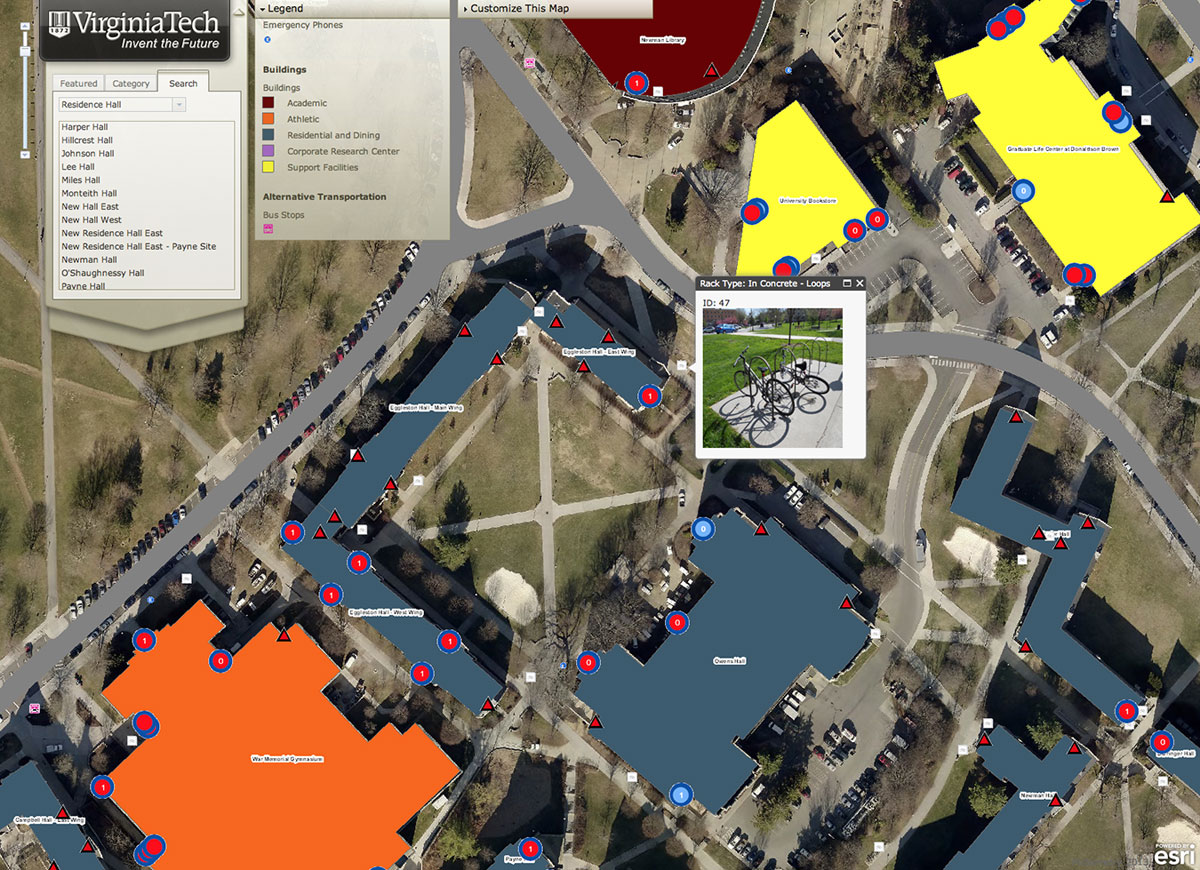Interactive Virginia Tech map offers customization, rich data layers, ease of use

A newly released interactive campus map offers a highly-customizable tool for finding specific buildings, discovering accessible routes, and exploring the Virginia Tech campus in new ways.
The map is the result of collaboration between Virginia Tech’s Enterprise Geographic Information Systems, University Relations, Facilities Services, and the Office of Equity and Access. The map was designed for use on mobile devices or in standard browsers, and includes a new high-resolution aerial photography layer in addition to the familiar color-coded Virginia Tech campus map. The mapping tool facilitates the location of campus points of interest, and provides rich new features that make it easier to get around by bus, bike, car, on foot, or using assistive devices.
The new map complements the static maps that have been available on the Virginia Tech website for several years. Those maps will continue to be available. The interactive campus map also uses many of the same symbols as the static maps to give it a familiar feel. Visitors can search campus street addresses, which were added in June, by accessing the My Location option in the Customize this Map menu. Street addresses will also appear whenever a building is clicked.
“The interactive map captures many of the dynamic elements that exist on the Virginia Tech campus,” says John Jackson, director of web communications at Virginia Tech. “It provides a much-needed service for the campus community, visitors, and guests. Today’s introduction is just the beginning; we plan to add more features, information, and functionality to the map.”
Dedicated to its motto, Ut Prosim (That I May Serve), Virginia Tech takes a hands-on, engaging approach to education, preparing scholars to be leaders in their fields and communities. As the commonwealth’s most comprehensive university and its leading research institution, Virginia Tech offers 240 undergraduate and graduate degree programs to more than 31,000 students and manages a research portfolio of $513 million. The university fulfills its land-grant mission of transforming knowledge to practice through technological leadership and by fueling economic growth and job creation locally, regionally, and across Virginia.




